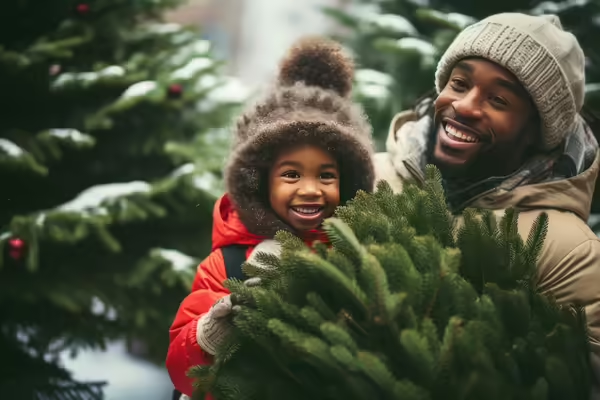
The National Christmas Tree Association reports that approximately 25–30 million natural Christmas trees are sold in the United States each year, offering families a sustainable and festive way to celebrate the season. Unlike artificial trees made from petroleum-based plastics, natural Christmas trees are a renewable resource grown specifically for harvesting and replanting, making them an eco-friendly holiday tradition.
Choosing the Perfect Tree
When selecting your Christmas tree, consider popular species such as Balsam Fir, White Fir, Fraser Fir, Scotch Pine, White Pine, and White Spruce. Each species offers unique characteristics such as fragrance, needle length, branch stiffness, density, and color. Personal preferences and family traditions often play a role in choosing the right tree for your home.
Caring for Your Tree at Home
Proper care ensures your tree remains fresh and beautiful throughout the holiday season. Follow these tips for optimal tree care:
- Protect Your Tree During Transport: Secure the tree with a tarp or netting to shield it from wind and damage.
- Prepare the Base: Make a fresh, horizontal cut at the base to enhance water absorption and ensure stability in the stand.
- Choose the Right Stand: Use a stand that supports the tree and holds an adequate water supply.
- Place Strategically: Position the tree away from heat sources such as fireplaces, heating vents, and direct sunlight. Lower room temperatures to reduce water loss.
- Water Regularly: Check water levels frequently to ensure the base is submerged at all times.
For safety, always turn off tree lights when you’re away or asleep.
Extending Freshness
The longevity of your tree depends on its species and freshness. Fir species, such as Fraser and Balsam, typically retain needles longer, while pine species last the longest. Pre-cut trees from local lots often provide fresher options compared to those shipped from distant locations. If possible, cutting your own tree ensures maximum freshness.
Recycling and Repurposing Your Tree
When the holidays are over, consider recycling or repurposing your Christmas tree:
- Composting and Mulching: Many communities offer tree recycling programs or composting facilities. Contact your local municipality for details.
- Crafts and Mulch: Use branches as mulch in your landscape or turn the trunk into tree cookies for crafting.
- Wildlife Habitat: Decorate your tree with natural materials to feed birds or sink it into a pond to create aquatic habitat.
Celebrate the season sustainably and enjoy the timeless charm of a natural Christmas tree. By following these care tips and recycling ideas, you can make the most of your tree and contribute to an eco-friendly holiday tradition.
University of Illinois Extension develops educational programs, extends knowledge, and builds partnerships to support people, communities, and their environments as part of the state's land-grant institution. Extension serves as the leading public outreach effort for University of Illinois Urbana-Champaign and the College of Agricultural, Consumer and Environmental Sciences in all 102 Illinois counties through a network of 27 multi-county units and over 700 staff statewide. Extension’s mission is responsive to eight strategic priorities — community, economy, environment, food and agriculture, health, partnerships, technology and discovery, and workforce excellence — that are served through six program areas — 4-H youth development, agriculture and agribusiness, community and economic development, family and consumer science, integrated health disparities, and natural resources, environment, and energy.